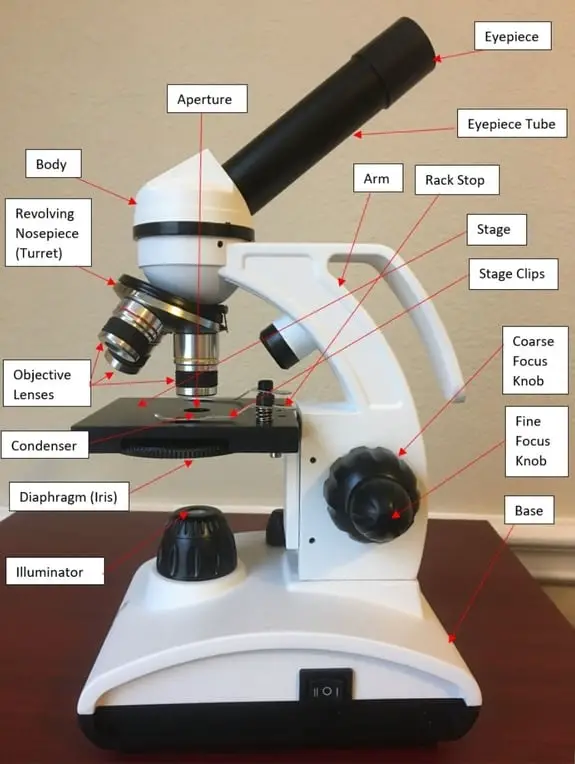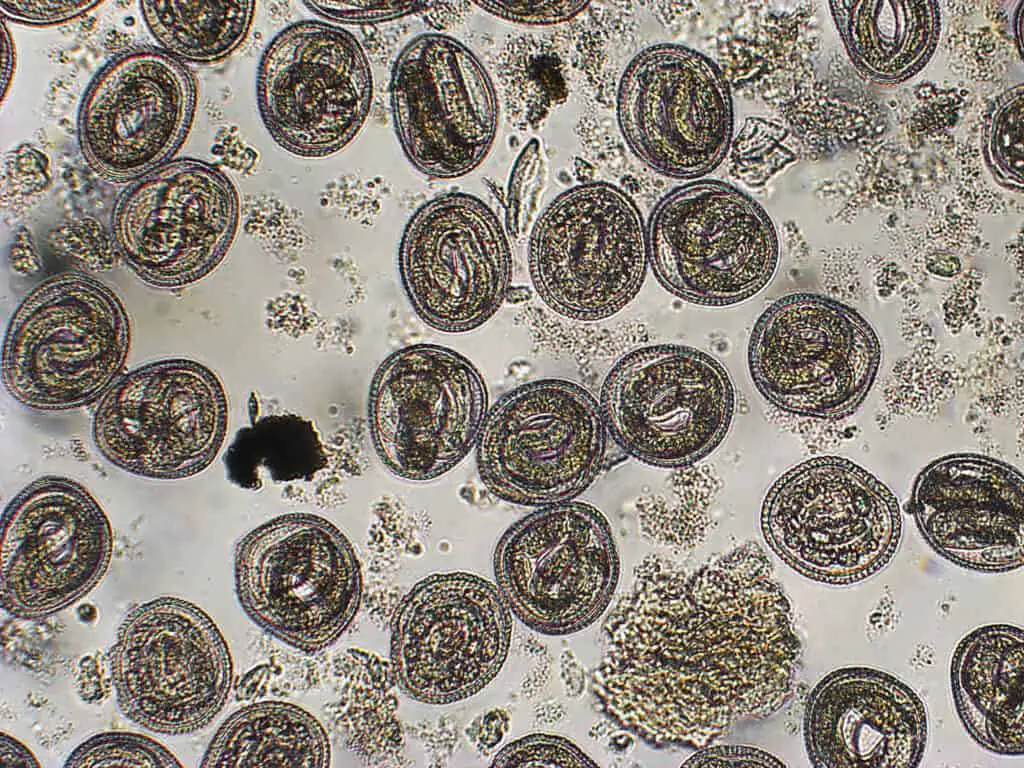Microscopic bacteria and living organisms are tiny in comparison to what we regularly see. To get a good look at them, your going to have to pull out a microscope. Looking at everyday items and samples under the microscope opens a new perspective, but oftentimes you might find that you are looking at this new thing upside down!
Microscopes invert images which makes the picture appear to be upside down. The reason this happens is that microscopes use two lenses to help magnify the image. Some microscopes have additional magnification settings which will turn the image right-side-up.
No matter where you have your slide and its contents, it will appear a little differently through a microscope. Images might appear to move left when you move the slide right or go up when you move them down. It takes some getting used to, but it’s all part of using a microscope! This effect is worth checking out the next time you are peering through a microscopic lens.
How is the Image Inverted?
When you peer down into a microscope, did you know that you are not actually looking at the object itself, but rather an image of an object that is kind of hovering a bit above the actual image? This is helpful to know as we discuss why an imaged is sometimes inverted when you look into the microscope. Obviously, the object does not magically flip over during the time you put your eye to the lens, but the image you see of that object is inverted so you see it upside down! The place where the image appears is called the intermediate image plane.
As we mentioned above, an image is inverted because it goes through two lens systems, and because of the reflection of light rays. The two lenses it goes through are the ocular lens and the objective lens. An ocular lens is the one closest to your eye when looking through a microscope or telescope.

Sometimes a microscope comes with a series of lenses and it is normally cylinder-shaped. The objective lens is the lens that is closer to the object. The image will pass through the first lens and then the second lens, and because of the curvature of the first lens, the image will be inverted. Again, along with being inverted, the image will be upside down, or on the opposite edge of the slide. The second lens, or the ocular lens, just further magnifies the inverted and magnified image that is projected from the objective lens.
Both lenses are essential to have in order to create the proper magnification of the image. The majority of the magnification happens within the objective lens. Some microscopes also have adjustments and multiple lenses to switch between, giving the user more control and a clearer focus.
In addition to the lens, the flipping of the image is also a consequence of light. Under the slide on which the object is being magnified, there is a light source that shines up and helps you to see the object better. This light is then refracted, or bent around the lens. Once it comes out of the other side, the two rays converge to make an enlarged and inverted image.
The focal lengths of a lens are also important as this will determine the magnification of an image. There are both positive and negative focal points. A positive focal point happens when the image is projected between the two lenses. This is because the light shines through the object and the first lens creating a ‘real image.’
Negative signs appear when the lens curves inward rather than outward. The shorter the focal length, the more magnified the image is. In other words, the closer the object is to the microscope, the bigger the internal image you are seeing will get.
Different Microscopes

The simplest form of a microscope is a magnifying glass. You may not really think of it as a microscope, but it is! It magnifies an image, but it does not invert the image or magnify it enough to truly see tiny things like cell structures or other details that are necessary for microscopic scientific studies.
What you would normally classify as a microscope is what you see in a school classroom or on a scientific TV show, and these are called compound microscopes. Compound microscopes invert images! They do this because of the two lenses they have and because of their increased level of magnification. That is also what makes them recognizable.
Obviously, other kinds of microscopes also flip images over, and there are others with an additional lens that re-inverts the image back to its original orientation. This means that the image you see has been inverted and then inverted again to be the same position it was in originally.
Quite a few microscopes, including electron microscopes and digital microscopes, will not show you inverted images. Binocular and dissecting microscopes will also not show an inverted image because of their increased level of magnification. Where you are at and what kind of work you are doing has a lot to do with what kind of image you are looking at.
Even with an inverted image, microscopes can increase the magnification of an image phenomenally. They have helped the world to progress by helping doctors, engineers, students, and everyone else to see a world beyond the one we see with our naked eye. They have brought about amazing feats in the medical field with tissues and cells as well as diseases and antibiotics.
Not only does it help us progress in the structures we create and the procedures we perform, but it also helps in fields like forensic science, biology, and the study of germs, viruses, and bacteria. Microscopic images help us to see the world from a new perspective that would be impossible without them. We just need to recognize when the image is right-side up!

